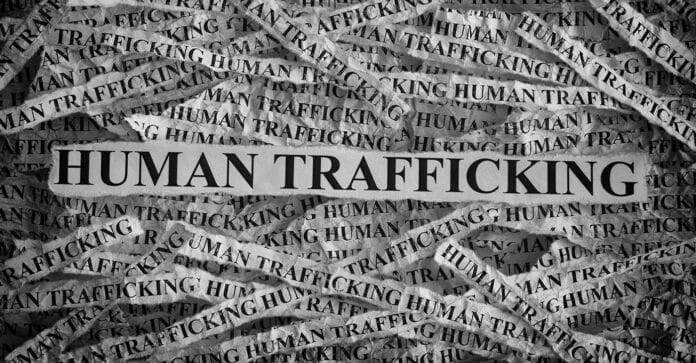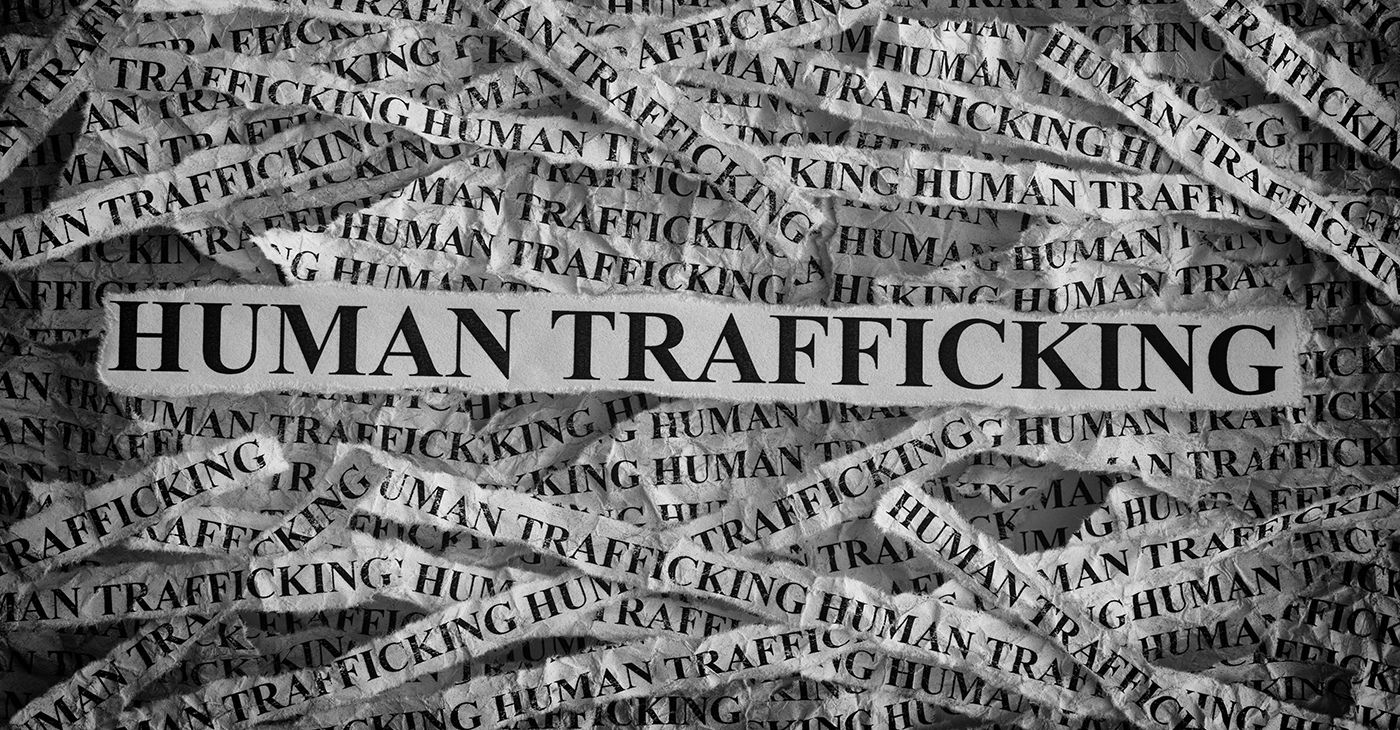
NNPA NEWSWIRE — The updated National Action Plan to Combat Human Trafficking responds to this predatory behavior by addressing the needs of underserved individuals, families, and communities. As such, officials said it reflects the administration’s commitments to gender and racial equity by taking action against the systemic injustices that communities experience, including underserved populations.
 human trafficking requires collaboration to complement and support the other pillars of prevention, protection, and prosecution. (Photo: iStockphoto / NNPA)” width=”694″ height=”362″/>
human trafficking requires collaboration to complement and support the other pillars of prevention, protection, and prosecution. (Photo: iStockphoto / NNPA)” width=”694″ height=”362″/>
By Stacy M. Brown, NNPA Newswire Senior National Correspondent
@StacyBrownMedia
Globally, an estimated 25 million people are subjected to human trafficking and forced labor, which is responsible for an estimated $150 billion annually in illicit profits.
In a fact sheet released by the White House on Friday, December 3, administration officials said human trafficking and forced labor “erodes the safety and health of our communities and transportation networks, the security of our borders, the strength of our economy, and the rule of law.”
They said the Biden-Harris administration is committed to keeping the fight to end human trafficking at the forefront of America’s national security agenda by releasing the new National Action Plan to Combat Human
“Human trafficking disproportionately impacts some of the most vulnerable and underserved members of our society,” the fact sheet noted.
The updated National Action Plan to Combat Human Trafficking responds to this predatory behavior by addressing the needs of underserved individuals, families, and communities.
As such, officials said it reflects the administration’s commitments to gender and racial equity by taking action against the systemic injustices that communities experience, including underserved populations.
“The anti-trafficking efforts outlined in the National Action Plan are directly linked to our broader efforts to address inequities for marginalized groups,” the administration officials stated further.
These communities often experience overlapping social and economic inequities, and individuals may suffer multiple forms of abuse.
As a result, individuals from these communities may be more vulnerable to becoming victims of human trafficking.
The fact sheet noted that the National Action Plan also reflects the administration’s commitment to workers’ rights and ending forced labor in global supply chains, which the COVID-19 pandemic has exacerbated due, in part, to job insecurity, supply chain disruptions, and exponential demand for essential medical supplies and services.
The National Action Plan also serves as an important component of advancing the administration’s priority of ensuring safe, orderly, and humane migration.
“As we continue to address the acute and long-term drivers of irregular migration, we must ensure our legal immigration pathways provide safe alternatives,” the White House stated.
“We must also reaffirm trust in the U.S. government’s commitment to protect individuals who have experienced human trafficking, including noncitizens.”
Administration officials said the National Action Plan retains a central focus on the foundational pillars of U.S. and global anti-trafficking efforts – prevention, protection, prosecution, and partnerships.
It contains strategic prevention programs which are wide-ranging, from educating vulnerable populations and mitigating risk factors to seeking to prevent goods produced with forced labor from entering U.S. markets.
It also serves to accomplish the following:
- * Enhance education and outreach efforts, including for at-risk populations.
- * Enhance community-coordinated responses to human trafficking.
- * Strengthen efforts to identify, prevent, and address human trafficking in global supply chains.
- * Build capacity to prevent the importation of goods produced with forced labor.
- * Address aspects of nonimmigrant visa programs that may facilitate the exploitation of visa applicants and visa holders.
Further, the plans protection encompasses the interventions, services, and supports needed to protect and assist victims of human trafficking.
The White House noted that protection starts with robust outreach and proactive identification efforts, and includes providing comprehensive victim services and applying victim-centered, trauma-informed strategies, including the following:
- Identify and engage with victims in a victim-centered, trauma-informed, and culturally competent manner.
- Support survivor-informed interventions, in which survivors of trafficking are essential partners and help to improve service delivery and inform victim assistance policy decisions.
- Seek to protect victims of human trafficking from incarceration, fines, or penalties for unlawful acts committed as a direct result of being subjected to trafficking.
- Improve access to immigration benefits to help provide assistance to victims of human trafficking.
- Expand and improve assistance to victims of human trafficking encountered by law enforcement agencies.
- Seek financial remedies for victims of human trafficking.
- Increase access to social services for victims of human trafficking to increase short- and long-term stability.
They also outlined prosecuting perpetrators, which involves holding individuals and entities engaged in human trafficking accountable and dismantling human trafficking networks.
Prosecution also would:
- Improve coordination among law enforcement to increase accountability for human trafficking.
- Build capacity of Federal, state, local, Tribal and territorial law enforcement to investigate and prosecute human trafficking and its illicit proceeds using a trauma-informed, victim-centered approach.
- Enhance efforts to bring traffickers to justice by deploying a broad range of tools, including, where appropriate, financial sanctions, federal contracting suspension and debarment, and travel restrictions.
- Increase efforts to investigate and prosecute forced labor.
Finally, the White House said effectively combating human trafficking requires collaboration to complement and support the other pillars of prevention, protection, and prosecution.
In doing so, they would also accomplish the following:
- Deepen our understanding of human trafficking networks that primarily impact or operate in the United States.
- Enhance information sharing to inform a strategic outcome.
- Strengthen Federal anti-trafficking efforts through external partnerships, including with the private sector, civil society organizations, and survivor input.
- Cooperate with allies, including trade partners, bilaterally and in regional and multilateral fora to address and combat human trafficking and forced labor.
- Continuously reevaluate the authorities and resources of the U.S. Government to combat human trafficking.
“Human trafficking is an evil practice that contradicts who we are as Americans and the rights we cherish. With this National Action Plan, we reaffirm our commitment to preventing and punishing human trafficking in all its forms and to addressing the social and economic conditions that can create greater vulnerabilities for marginalized groups,” said Assistant to the President and Homeland Security Advisor Dr. Liz Sherwood-Randall.
“We recognize and express our gratitude to the community leaders, service providers, businesses, grassroots activists, and individuals with lived experience of human trafficking across the United States and around the world who continue to forge innovative anti-trafficking strategies and push various forms of government to improve their response to human trafficking.
“This includes addressing the ways in which policies and actions may have contributed to disparities that marginalize certain communities, jeopardized safe, orderly, and humane migration, or emboldened traffickers.
“This administration will continue to partner with a growing cadre of interagency, civil society, and international partners – to include those who have experienced human trafficking – to improve our collective efforts to comprehensively address human trafficking.”
Stacy M. Brown is an NNPA Newswire Correspondent

